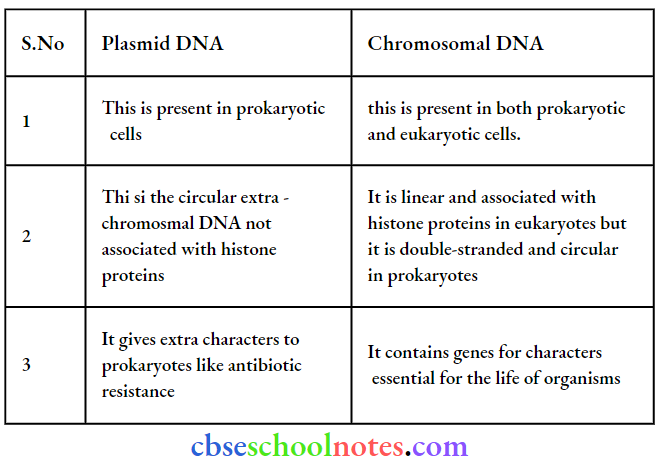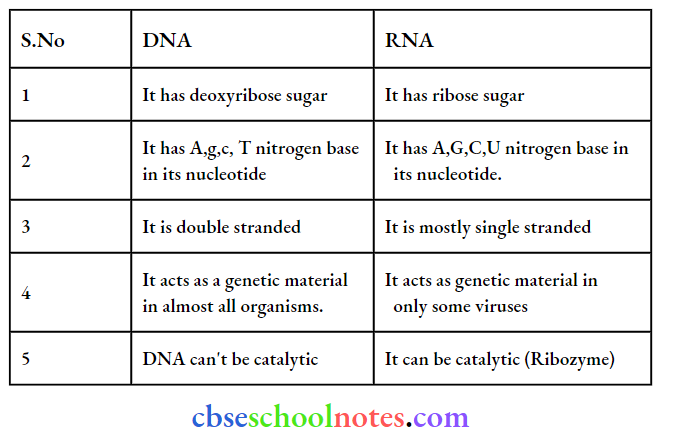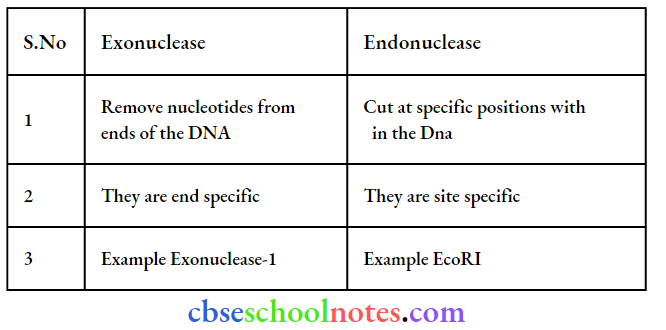Biotechnology – Principles And Processes Question And Answers
Question 1. Can you list 10 recombinant proteins which are used in medical practice? Find out where they are used as therapeutics (use the internet)
Answer:

Question 2. Make a chart (with diagrammatic representation) showing a restriction enzyme, the substrate the DNA on which it acts, the site at which it cuts DNA, and the product it produces.
Answer:

Question 3. From what you have learned, can you tell whether enzymes are bigger or DNA is bigger in molecular size? How did you know?
Answer:
DNA is bigger in molecular size. DNA is made up of sugar, phosphate, and nitrogenous bases. An enzyme is m|de up of only one or few polypeptides. The enzyme is synthesized from a portion of DNA.
Read and Learn More Class 12 Biology Chapter Wise
Question 4. What would be the molar concentration of human DNA in a human cell? Consult your teacher.
Answer:
The molar concentration of human DNA in a human diploid ceil as follows:
- Total number of chromosomes x 6.023 x 10”
- 46 x 6.023× 1023
- 277.06 × 1023 Moles.
Hence, the molar concentration of DNA in each diploid cell in humans is 277.06 × 1023 moles.

Question 5. Do eukaryotic cells have restriction endonucleases? Justify your answer.
Answer:
Eukaryotic cells have no restriction enzymes as the DNA molecules of eukaryotes are heavily methylated. It is present in prokaryotic cells (like bacteria) where these act as defense mechanisms to restrict the growth of bacteriophages.
Question 6. Besides better aeration and mixing properties, what other advantages do stirred-tank bioreactors have over shake flasks?
Answer:
Shake flask is used for small-scale production but the stirred-tank bioreactors are used for large-scale production of biotechnological products.
The advantages of stirred tank bioreactors over shake flasks are that these facilitate:
- Temperature control system,
- pH control system,
- Foam control system and
Sampling ports from where small, volumes of the cultures can be obtained and tested from time to time.
Question 7. Collect 5 examples of palindromic DNA sequences by consulting your teacher, better try to create a palindromic sequence by following base pair rules.
Answer:
- 5’ GAATTC 3’
3’ CTTAAG 5’ - 5′ GGATCC 3′
3′ CCTAGG 5‘ - 5’ ACTAGT 3′
3’ TGATCA 5′ - 5′ AAGCTT 3′
3’ TTCGAA 5′ - 5’AGGCCT3′
3’ TCCGGA 5′
Question 8. Can you recall meiosis and indicate at what stage a recombinant DNA is made?
Answer:
Meiosis is the cell division process of gamete formation. It occurs in two steps – Meiosis-I and Meiosis-II D during the pachytene stage of prophase -I of meiosis-I, crossing over takes place between non-sister chromatids of homologous chromosomes and a recombinant DNA is made.
Question 9. Can you think and answer how a reporter enzyme can be used to monitor the transformation of host cells by foreign DNA in addition to a selectable marker?
Answer:
A reporter gene is used to monitor die transformation of host cells by foreign DNA, They act as a selectable marker to determine whether the host cell has taken up the foreign DNA or the foreign gene gets expressed in the cell.
- Here, the reporter gene is used as a selectable marker to find out the successful uptake of the gene of interest.
- An example of a reporter gene includes the lac Z gene which encodes 0- galactosidase enzyme.
Question 10. Describe briefly the following:
- Origin of replication
- Bioreactors
- Downstream processing
Answer:
1. Origin of replication:- It is a DNA sequence that initiates any piece of linked DNA to replicate and is also called on-site. It controls the copy numbers of the linked DNA.
2. Bioreactors:- Bioreactors are vessels of large volumes (100-1000 liters) in which raw materials are biologically converted into specific products.
It provides all die optimal conditions for achieving the desired product by providing optimal growth conditions like temperature, pH, substrates, vitamins and oxygen.
Stirred tank bioreactors are commonly used bioreactors.
A bioreactor has die following components:

3. Downstream processing -All the processes to which a product is subjected to before being marketed as a finished product are called downstream processing.
- It includes the separation of the product from the reactor.
- Purification of the product
- Formulation of the product with suitable preservatives
- Quality control testing and trials in the case of drugs.
Question 11. Explain briefly.
- PCR
- Restriction enzymes and DNA
- Chitinase
Answer:
- PCR – PCR stands for polymerase chain reaction, which is a method for amplification of small segments of DNA.
- Restriction enzymes and DNA– Restriction enzymes are called ‘molecular scissors’ because they cut the helix of DNA at a specific site. DNA is the genetic material, which carries and passes the genetic characteristics or information from one generation to another.
- Chitinase – Chitinase is an enzyme that is used to degrade the cell wall of fungi to release its cellular components.
Question 12. Discuss with your teacher and find out how to distinguish between
- Plasmid DNA and chromosomal DNA
- DNA and RNA
- Exonuclease and endonuclease
Answer:
1. Plasmid DNA and chromosomal DNA

2. DNA and RNA

3. Exonuclease and endonuclease

